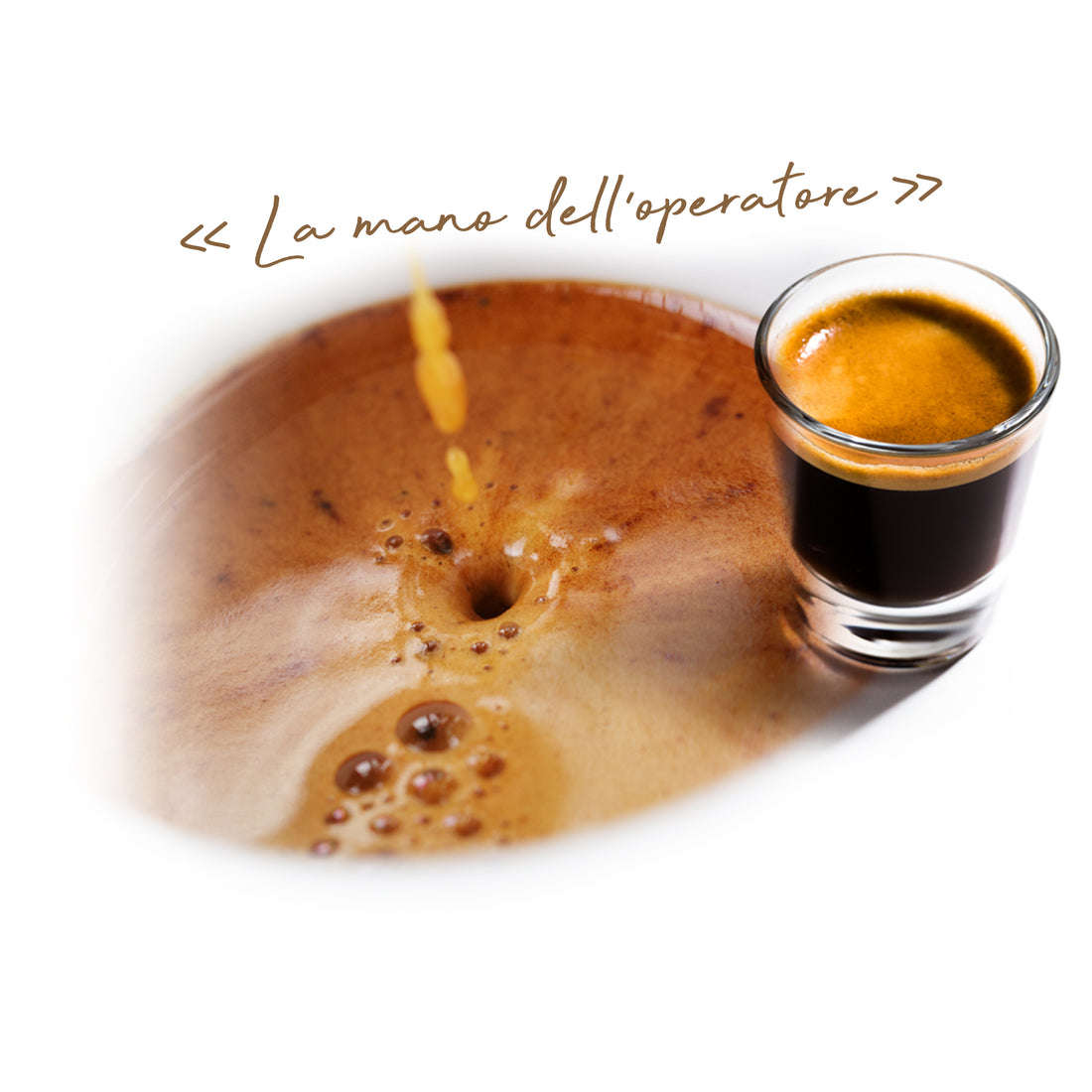
Our tips to make the Unicorn of an Espresso (La mano dell’operatore)
Share

A great espresso mainly depends on the person who makes the espresso! Chris, your favourite head roaster and barista, shares some simple tips below that are easy to implement and to remember.
Consistency is the name of the game when getting into espresso. There are numerous variables that contribute to creating that unicorn of a shot we all desire and crave. The key is to tackle them one by one. Approach each step with care and be as precise as you can. Once you think you have one step dialed in, keep it consistent as you work your way through the others and only adjust when you have at least ONE other variable locked in. This might sound confusing, but bear with me as I break down a few variables that will help you along the path to great espresso.
Grind
We all know that espresso grind is fine and that great equipment will make ALL the difference in your espresso routine. But how fine is fine? Think of it like water passing through compacted sand vs water passing through compacted flour. Water under pressure from the grouphead will pass through a sand-like grind with ease, leaving you with a sour, under-extracted face disfiguring shot. On the other hand, water pushed through the flour-like grind, will either choke and not come out at all or you'll have a very slow pour that is over-extracted and bitter. Somewhere in the middle is where you will find your sweet spot and this is where roast level will play a big factor. Light roasts like a finer grind and dark roasts like a coarse grind. It's all trial and error at this point.
Weight
Industry standard for a double espresso is 18g of coffee in and 40g of coffee out in around 25-32 seconds. This is a good frame to work off of as these parameters are tried and true. It's important to weigh out your ground coffee and the shot that you just pulled when gathering data. The weights will aid you in better understanding why your shots are behaving in certain ways. A low dosed portafilter will likely yield faster shots where a high dose would leave very little room in the portafilter for the water to flow and choke. Try them all even if you think you know it's going to be bad - you'll learn a lot and might even be pleasantly surprised.
Tamp
This can be a tricky step but like everything else, practice makes perfect. Your form is key to a successful tamp. Too hard, the espresso chokes, too soft and it runs through too fast. If you press too hard to one side, the puck is pushed into one corner leaving you with an uneven puck which delivers an unbalanced espresso (water will always find the path of least resistance). With the portafilter on the table in one hand, twist your shoulders to run parallel with the portafilter handle. Then, tamper in your other hand, raise your elbow so that your arm is perpendicular to the portafilter and tamp. This way you can be sure that your tamp will be as close to level as possible. It may seem awkward at first, but it allows you to put a lot more weight onto the puck with a lot more control.
Time
Your timer should start as soon as water comes into contact with your puck, ie. as soon as you hit the start button. Not when you start seeing liquid drip into your cup. That would be like saying a 100m hurdle dash only starts when you jump the first hurdle. The race has already begun, the same way your extraction has already begun. Some espresso machines have a pre-infusion capability built in which starts the machine for 1 second, stops it for +/- 3 seconds and then resumes running high pressured water through your puck thus having a saturated puck to allow for an even distribution of water. It's a very handy function and can sometimes be replicated manually. But be careful not to apply unnecessary wear and tear to your machine in doing so. It's also worth mentioning that this isn't mandatory for a successful shot, it's merely another feature.
Cleanliness
Our biggest request to ALL espresso makers out there: please clean your equipment. Cleaning and caring for your espresso machine and accessories is a game changer and we feel so strongly about it that we will be writing another post on this subject alone (Manutenzione). At the very least, please remember to purge the wand before and after each use.
That's enough for now, it's a lot to digest, I know! But please use these tips and tricks that I have learnt over 5+ years of espresso brewing to better or tweak your espresso knowledge and experience. There are a TON of variables that come into play and no outcome has to follow these guidelines to be considered a good espresso. If you enjoy your coffee, you've already succeeded - use these to work towards honing the craft and experimenting with this amazing product and technology.
For any more tips and maybe a demo or two, come and see us at the roastery and we'll happily assist as best we can. In the meantime, stay curious.
This article is the third in a series about espresso. Did you know the Italians follow the 5Ms: Miscela, Macinadosatore, Mano dell'operatore, Macchina espresso and Manutenzione. Stay tuned if you want to know more about each step! (and if you can't speak Italian!)
